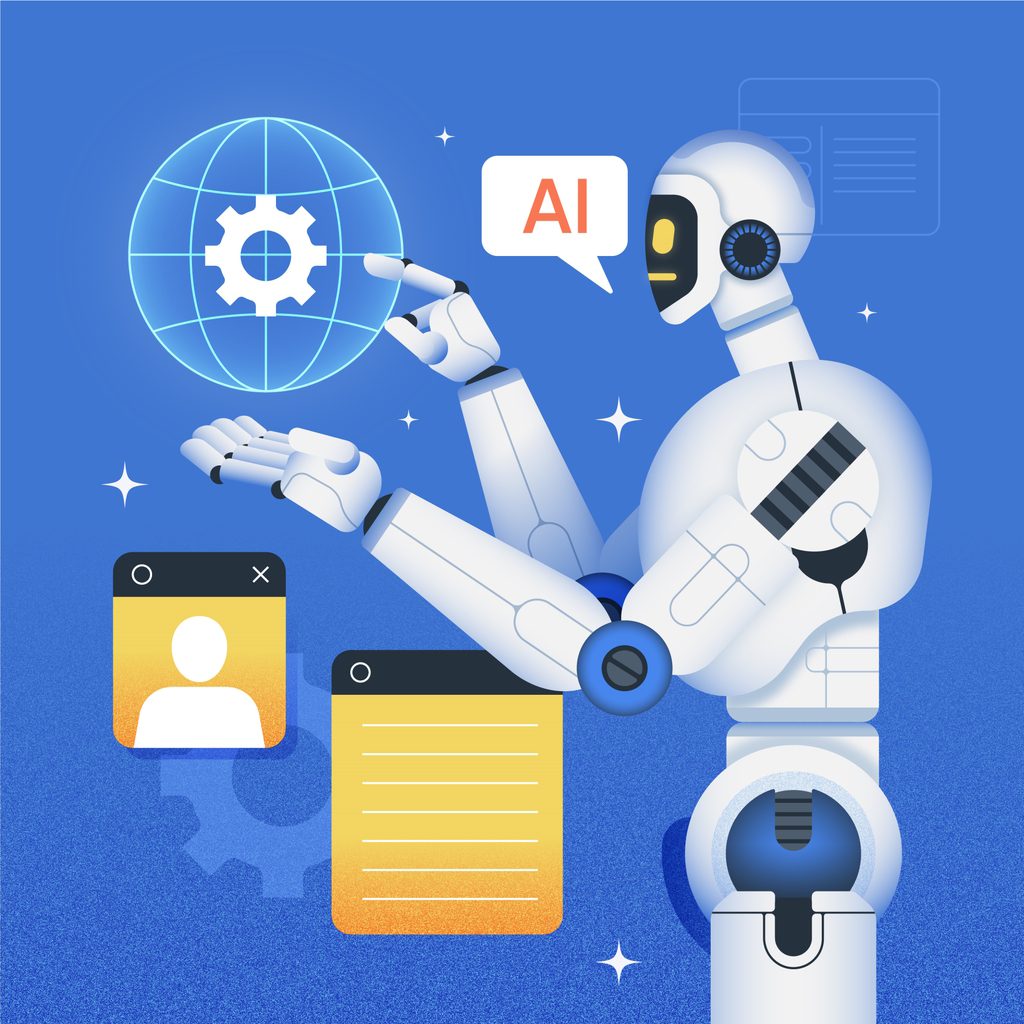Artificial Intelligence (AI) has revolutionized various industries, transforming how businesses operate and how solutions are developed. In particular, AI software development has become a critical area of focus, driving innovation and efficiency. As a professional blogger, I aim to provide a comprehensive guide to AI software development, covering trends, tools, techniques, and best practices. This post will delve deep into the subject, offering valuable insights and practical advice for developers, businesses, and tech enthusiasts.
Understanding AI Software Development
What is AI Software Development?
AI software development involves creating applications and systems that can perform tasks typically requiring human intelligence. These tasks include learning, reasoning, problem-solving, perception, and natural language understanding. AI software can range from simple rule-based systems to complex neural networks and deep learning models.
Importance of AI in Modern Software Development
AI has become indispensable in modern software development for several reasons:
- Automation: AI automates repetitive tasks, reducing human error and increasing efficiency.
- Enhanced Decision-Making: AI systems can analyze vast amounts of data to provide actionable insights and recommendations.
- Personalization: AI enables personalized user experiences by analyzing user behavior and preferences.
- Innovation: AI drives innovation by enabling new capabilities and solutions that were previously unimaginable.
Key Trends in AI Software Development
1. Machine Learning and Deep Learning
Machine learning (ML) and deep learning (DL) are at the core of AI software development. These techniques allow systems to learn from data and improve over time without explicit programming.
Machine Learning:
- Supervised Learning: Involves training models on labeled data to make predictions.
- Unsupervised Learning: Involves finding patterns and relationships in unlabeled data.
- Reinforcement Learning: Involves training models to make sequences of decisions by rewarding desired behaviors.
Deep Learning:
- Neural Networks: Multi-layered structures that simulate the human brain’s functioning.
- Convolutional Neural Networks (CNNs): Specialized for processing grid-like data, such as images.
- Recurrent Neural Networks (RNNs): Specialized for processing sequential data, such as time series or text.

2. Natural Language Processing (NLP)
NLP enables machines to understand, interpret, and generate human language. It is crucial for applications like chatbots, virtual assistants, and sentiment analysis.
Key Techniques:
- Tokenization: Breaking text into individual words or tokens.
- Part-of-Speech Tagging: Identifying the grammatical categories of words.
- Named Entity Recognition: Identifying entities like names, dates, and locations in text.
- Sentiment Analysis: Determining the sentiment or emotion expressed in text.
3. Computer Vision
Computer vision involves enabling machines to interpret and understand visual information from the world. It is essential for applications like image recognition, object detection, and autonomous vehicles.
Key Techniques:
- Image Classification: Assigning labels to images based on their content.
- Object Detection: Identifying and locating objects within images.
- Segmentation: Dividing an image into multiple segments or regions.
- Facial Recognition: Identifying or verifying individuals based on their facial features.
Essential Tools for AI Software Development
1. Frameworks and Libraries
Frameworks and libraries simplify the development process by providing pre-built modules and functions for various AI tasks.
Popular AI Frameworks:
- TensorFlow: An open-source framework developed by Google, widely used for deep learning.
- PyTorch: An open-source framework developed by Facebook, known for its flexibility and ease of use.
- Keras: A high-level neural networks API, running on top of TensorFlow or Theano.
Example:
1 2 3 4 5 6 7 8 9 10 11 12 13 | import tensorflow as tf # Define a simple neural network model model = tf.keras.Sequential([ tf.keras.layers.Dense(128, activation='relu'), tf.keras.layers.Dense(10, activation='softmax') ]) # Compile the model model.compile(optimizer='adam', loss='sparse_categorical_crossentropy', metrics=['accuracy']) # Train the model on the dataset model.fit(train_data, train_labels, epochs=5) |
2. Development Environments
Integrated development environments (IDEs) and notebooks provide a conducive environment for AI software development.
Popular Development Environments:
- Jupyter Notebook: An open-source web application for creating and sharing documents that contain live code, equations, visualizations, and narrative text.
- Google Colab: A cloud-based Jupyter Notebook service that provides free access to GPUs.
- PyCharm: An IDE developed by JetBrains, tailored for Python development with robust support for scientific and data analysis tasks.
3. Data Management and Processing Tools
Managing and processing large datasets is a critical aspect of AI software development.
Popular Data Management Tools:
- Pandas: A Python library providing high-performance, easy-to-use data structures, and data analysis tools.
- NumPy: A Python library used for working with arrays and numerical data.
- Apache Hadoop: An open-source framework for distributed storage and processing of large datasets.
Example:
1 2 3 4 5 6 7 8 | import pandas as pd # Load a dataset data = pd.read_csv('data.csv') # Process the data data = data.dropna() # Remove missing values data['label'] = data['label'].astype('category') # Convert labels to categorical type |
Techniques and Best Practices in AI Software Development
1. Data Collection and Preprocessing
Quality data is the foundation of effective AI models. Therefore, data collection and preprocessing are critical steps in the development process.
Data Collection:
- Data Sources: Identify reliable sources of data relevant to your problem domain.
- Data Augmentation: Generate additional data through techniques like rotation, scaling, and translation to enhance model performance.
Data Preprocessing:
- Cleaning: Remove noise and inconsistencies from the data.
- Normalization: Scale features to a consistent range to improve model performance.
- Feature Engineering: Create new features or transform existing ones to better represent the underlying patterns.
2. Model Selection and Training
Choosing the right model and training it effectively are crucial steps in AI software development.
Model Selection:
- Algorithm Choice: Choose an appropriate algorithm based on the problem type and data characteristics (e.g., regression, classification, clustering).
- Model Complexity: Balance model complexity with the risk of overfitting or underfitting.
Model Training:
- Hyperparameter Tuning: Optimize hyperparameters to improve model performance.
- Cross-Validation: Use cross-validation to assess the model’s generalizability.
- Early Stopping: Implement early stopping to prevent overfitting by monitoring the model’s performance on a validation set.
3. Model Evaluation and Validation
Evaluating and validating the model ensures that it performs well on unseen data.
Evaluation Metrics:
- Accuracy: The proportion of correct predictions over the total predictions.
- Precision and Recall: Precision measures the proportion of true positive predictions, while recall measures the proportion of actual positives correctly identified.
- F1 Score: The harmonic mean of precision and recall, providing a balanced evaluation metric.
Validation Techniques:
- Holdout Validation: Split the data into training and test sets.
- Cross-Validation: Use k-fold cross-validation to evaluate model performance on multiple subsets of the data.
4. Deployment and Monitoring
Deploying AI models and monitoring their performance in production is the final step in the development process.
Deployment Strategies:
- Batch Processing: Process data in batches at scheduled intervals.
- Real-Time Processing: Deploy models for real-time predictions using APIs or microservices.
Monitoring:
- Performance Monitoring: Continuously monitor model performance metrics to detect drifts or degradations.
- Feedback Loops: Implement feedback loops to collect new data and retrain models as needed.

Challenges in AI Software Development
Despite its potential, AI software development comes with several challenges that developers and businesses must address.
1. Data Quality and Quantity
High-quality, large datasets are essential for training effective AI models. However, obtaining and curating such data can be challenging and time-consuming.
Solutions:
- Data Augmentation: Enhance existing datasets with artificial data generation techniques.
- Synthetic Data: Generate synthetic data that mimics real-world data.
2. Model Interpretability
AI models, particularly deep learning models, can be complex and difficult to interpret. Understanding how a model makes decisions is crucial for building trust and ensuring compliance with regulations.
Solutions:
- Explainable AI (XAI): Use techniques and tools that provide insights into model behavior and decision-making.
- Simpler Models: Whenever possible, opt for simpler models that are easier to interpret and explain.
3. Scalability
Scaling AI solutions to handle large volumes of data and high-velocity streams can be challenging.
Solutions:
- Distributed Computing: Use distributed computing frameworks like Apache Spark to process large datasets efficiently.
- Cloud Services: Leverage cloud-based AI services that provide scalable infrastructure and tools.
Future Trends in AI Software Development
The field of AI software development is continuously evolving, with several emerging trends set to shape its future.
1. Edge AI
Edge AI involves deploying AI models on edge devices, such as smartphones and IoT devices, to perform real-time data processing and inference. This approach reduces latency and bandwidth usage by processing data locally.
Benefits:
- Real-Time Processing: Enable real-time decision-making without relying on cloud connectivity.
- Privacy: Enhance data privacy by processing data locally on devices.
2. Federated Learning
Federated learning is a distributed approach to training AI models across multiple devices while keeping the data localized. This technique addresses data privacy concerns and reduces the need for centralized data collection.
Benefits:
- Data Privacy: Preserve user privacy by keeping data on local devices.
- Scalability: Scale model training across numerous devices without centralizing data.
3. Automated Machine Learning (AutoML)
AutoML involves automating the process of selecting, training, and tuning machine learning models. This trend aims to make AI accessible to non-experts and accelerate the development process.
Benefits:
- Accessibility: Enable non-experts to build and deploy AI models.
- Efficiency: Reduce the time and effort required for model development and optimization.
Conclusion
AI software development is a dynamic and rapidly evolving field, offering immense potential for innovation and efficiency. By understanding the key trends, tools, techniques, and challenges, developers and businesses can harness the power of AI to create impactful solutions. As technology continues to advance, staying informed about the latest developments and best practices in AI software development will be crucial for success.
Useful Links
By leveraging the insights and techniques discussed in this guide, you can enhance your AI software development efforts and stay ahead in the ever-evolving field of artificial intelligence. Stay tuned for more in-depth articles and tutorials on AI and software development.



